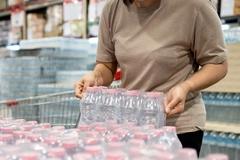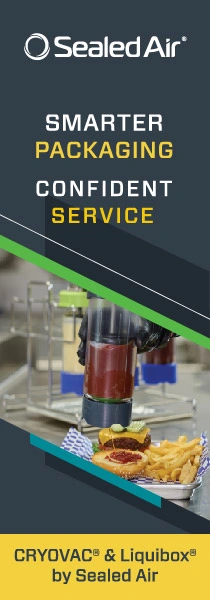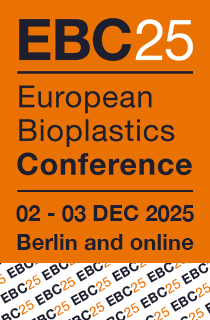Amcor, ProAmpac & Tetra Pak: Driving dairy innovations with recyclables amid on-the-go convenience demands
Key takeaways
- Amcor, ProAmpac, and Tetra Pak are advancing recyclable, compostable, and renewable-material packaging.
- Growing demand for on-the-go, ready-to-drink, and functional dairy products is driving innovation in lightweight, flexible, and easy-to-use packaging formats.
- The companies emphasize maintaining food protection, shelf life, and processing efficiency while meeting sustainability goals.
Packaging experts are advancing dairy applications to meet environmental sustainability goals and evolving consumer habits. We speak with Amcor, ProAmpac, and Tetra Pak to explore the latest dairy packaging trends and how the global companies’ innovations address recent product demands.
Tetra Pak’s latest consumer research reveals that health-conscious consumers are opting for products with functional benefits.
“Convenience is also a key driver, with 59% of consumers now preferring ready-to-drink formats for their portability and ease of use,” a spokesperson at Tetra Pak tells Packaging Insights.
“When it comes to functional ingredients, liquid formats are gaining ground over powder. Consumers value the fact that these products require no preparation, are easy to store, and suitable for on-the-go lifestyles.”
Meanwhile, Ebrahim Jalali Dil, global senior innovation, Sustainable Film Packaging at ProAmpac, tells us the main trend in sustainable packaging, including dairy products, is transitioning from rigid to flexible packaging to reduce plastic waste and improve the LCA of a package.
“In addition, the rise in portable on-the-go dairy products like drinkable yogurts and protein shakes is driving demand for lightweight, monomaterial flexible packaging that supports sustainability and convenience.”
Tetra Pak finds convenience to be a key driver in dairy pack innovations, with consumers preferring ready-to-drink formats over conventional products.
“Brands are shifting toward designed for recycling and non-foil structures that deliver the same oxygen and light barriers as traditional laminates but are easier to recycle.”
Jasson Mills, R&D director at Amcor Flexibles Asia Pacific, says Amcor focuses on premade tubs — with in-mold labelling and die cut lidding — and spouted pouch formats for yogurt and dairy-based beverages, particularly aimed at out-of-home consumption.
“Straw-insert pouches are gaining traction for their convenience, portability, and ease of use to better meet evolving consumer habits,” he tells Packaging Insights.
Paper-based barriers
One of Tetra Pak’s latest product innovations is its aseptic carton, featuring a paper-based barrier that replaces the traditional aluminum foil barrier layer to protect against oxygen, light, moisture, and bacteria.
“Together with plant-based polymers, the paper-based barrier increases the total content of renewable materials in the carton to 90% and reduces the carbon footprint of an aseptic package by one third compared to traditional aseptic carton packages,” says the Tetra Pak spokesperson.
“The results have shown that the solution can provide comparable shelf life and protection from oxygen and light to conventional aseptic cartons compared to traditional aseptic cartons with an aluminium foil layer.”
Further packaging material innovations at Tetra Pak include enhancing sustainability by replacing fossil-based plastics with plant-based materials in caps or external layers of beverage cartons.
“We also pioneered the use of certified recycled polymers in carton caps — since its launch, new collaborations have been initiated across Europe with leading dairy brands,” shares the spokesperson.
“In addition to innovations in packaging material structure, we are also expanding our packaging format portfolio to support trends like the fast-growing on-the-go dairy segment. Our carton solutions are designed to align with changing consumption patterns, offering convenience without compromising sustainability.”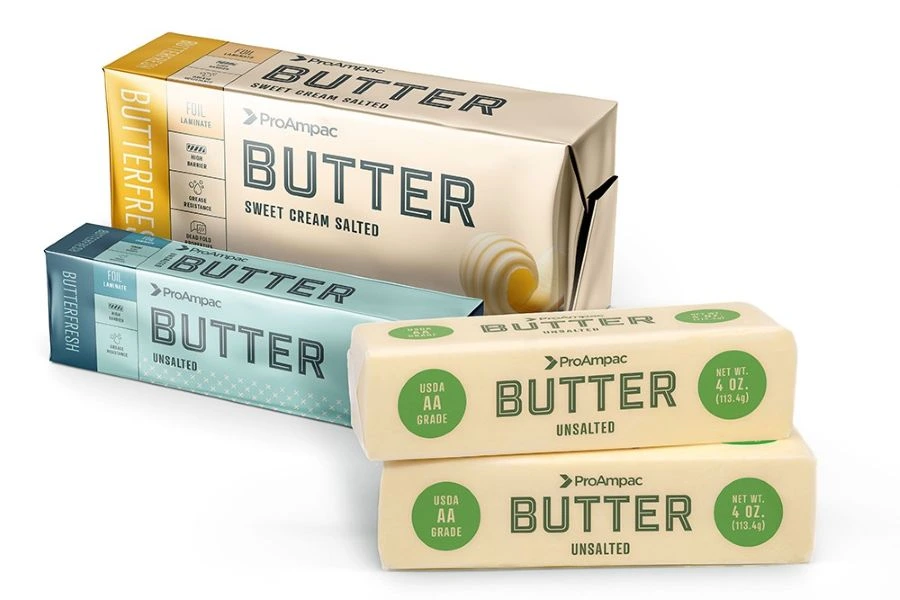 ProAmpac’s ButterFresh Parchment line (Image credit: ProAmpac).
ProAmpac’s ButterFresh Parchment line (Image credit: ProAmpac).
“An example of our innovative package format is Tetra Prisma Aseptic, designed to fit perfectly in the hand, its unique octagonal shape makes it a modern, standout package for both on-the-go consumption and at-home use.”
Meanwhile, ProAmpac has expanded its butter packaging portfolio. “The ButterFresh Parchment line now includes a wax-free, PFAS non-intent parchment wrap that preserves freshness and offers excellent machine runnability and dead-fold,” says Jalali Dil.
“Printed ButterFresh Parchment has also earned OK compost HOME certification from TÜV Austria, making it one of the first home-compostable butter wraps to deliver strong grease-resistance and fold retention.”
Cheese pack innovations
In cheese packaging, Jalali Dil says ProAmpac’s ProActive Recycle-Ready R-2300 PE-based platform is purpose-built for high-speed chunk-cheese applications.
“It combines clarity, puncture resistance, and low seal-initiation temperature with strong seal-through performance, ensuring shelf life and efficiency. The structure is compatible with PE recycling streams and can include post-consumer recycled (PCR) content, advancing circularity in dairy packaging,” he explains.
Meanwhile, Amcor is partnering with leading dairy brands in Australia and New Zealand to develop flexible packaging that protects freshness, reduces waste, and supports the move toward circular packaging.
One of Amcor’s most recent innovations is in cream cheese applications. “Packaging hot-fill dairy products like cream cheese presents a technical challenge: materials must provide strong barrier protection, withstand high temperatures, and maintain shelf life all without compromising food safety or processing performance,” says Mills. 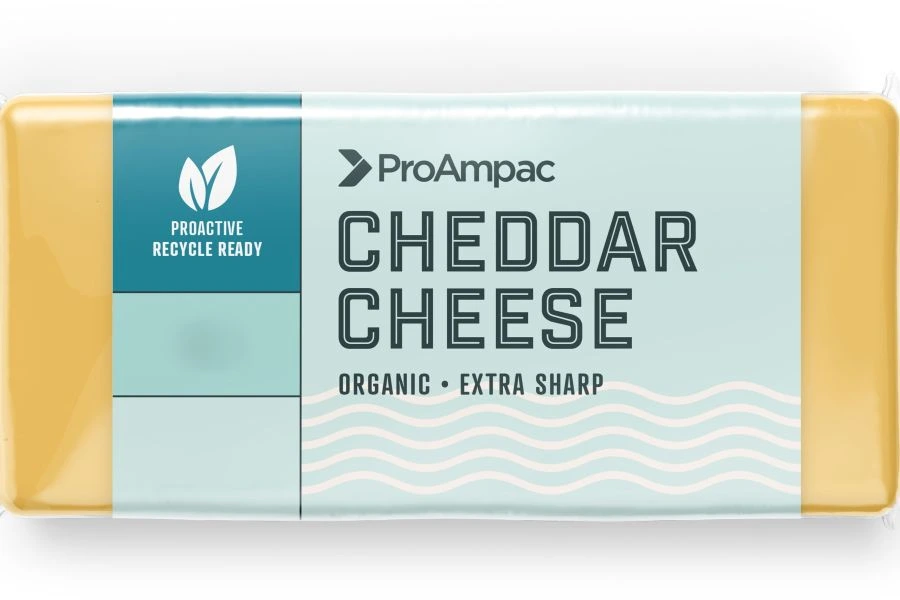 ProAmpac’s recycle-ready cheese packaging (Image credit: ProAmpac).
ProAmpac’s recycle-ready cheese packaging (Image credit: ProAmpac).
“Until recently, these requirements typically meant using multimaterial structures with PET or nylon that weren’t recyclable.”
He stresses Amcor’s AmPrima platform changes that. “We developed a monomaterial, recycle-ready solution that meets the demands of hot-fill cream cheese applications, enabling brands to move away from complex, non-recyclable laminates. Crucially, the new format delivers superior performance, with increased uptime and reduced waste when running on existing filling equipment.”
Another recent packaging update for Amcor has been in shredded cheese. “Shredded cheese is one of the most technically demanding food applications to package, requiring strong oxygen and moisture barriers, seal integrity, product visibility, and line performance,” notes Mills.
“Traditionally, this has meant using multilayer films with PET or PVDC, which are non-recyclable and difficult to recover.”
“AmPrima addresses this challenge with a monomaterial PE structure that replicates the barrier and sealing performance of complex laminates while enabling recyclability through approved soft plastic collection systems.”
Mills says the packaging supports food quality and hygiene, protects against spoilage, and maintains shelf life critical for dairy products sold through chilled retail and foodservice channels.
“By removing non-recyclable barriers and replacing them with recyclable mono-materials, AmPrima helps food manufacturers meet rising regulatory and brand-led sustainability targets without compromising food integrity or shelf presence.”
Ensuring product safety
While Tetra Pak aims to enhance the sustainability profile of its packaging, it attempts to ensure these advancements do not compromise food protection.
The spokesperson adds: “Our industry-first paper-based barrier for aseptic cartons, combined with plant-based polymers, reduces the carbon footprint of aseptic food packaging by up to one third.”
“Crucially, it maintains the highest standards of food safety and performance. It offers comparable shelf life and protection against oxygen and light, when compared to traditional cartons with an aluminium foil layer.”
Meanwhile, Amcor’s Mills says AmPrima is designed to maintain the shelf life and product protection demanded by dairy while simplifying the packaging structure.
“Both the cream cheese and shredded cheese solutions deliver high-barrier performance for oxygen and moisture, helping reduce spoilage and food waste,” he adds.
“They do this while transitioning from multi-material laminates to monomaterial PE structures that are compatible with local recycling systems where they exist.”
Carton advantages
Tetra Pak says beverage cartons have been a trusted packaging solution for over 70 years, particularly for milk and other dairy products in ambient and chilled conditions.
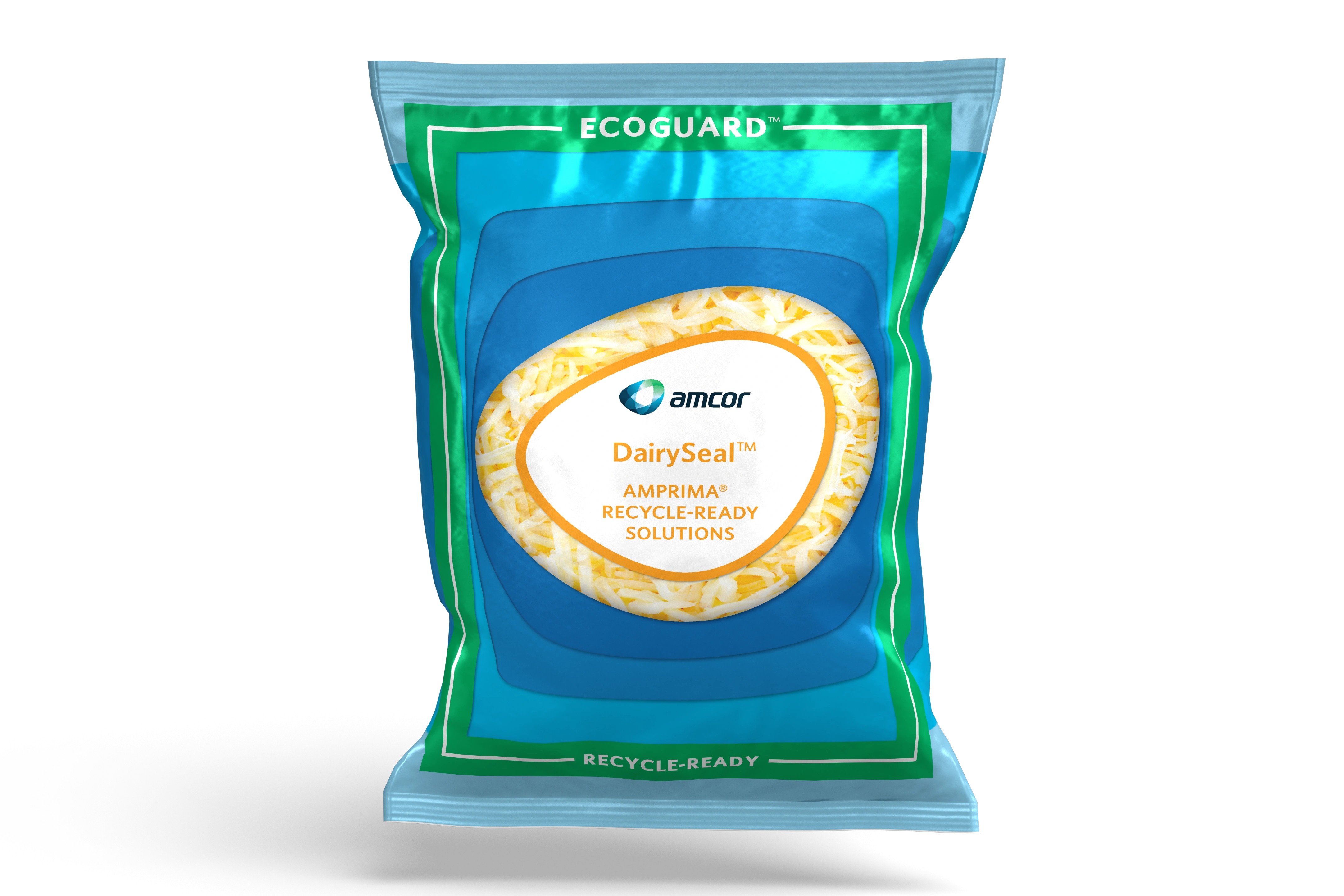 Amcor's AmPrima cheese packaging (Image credit: Amcor).“They consistently deliver reliable protection and performance. Cartons are specifically designed to shield contents not only from moisture, but also light and oxygen — critical factors in preserving freshness, taste, and nutritional value,” notes the spokesperson.
Amcor's AmPrima cheese packaging (Image credit: Amcor).“They consistently deliver reliable protection and performance. Cartons are specifically designed to shield contents not only from moisture, but also light and oxygen — critical factors in preserving freshness, taste, and nutritional value,” notes the spokesperson.
Circularity barriers
An important part of a circular economy is effective material recycling, which requires collection and recycling infrastructure and a market for recycled materials.
“Our paper-based carton packages are already recyclable where adequate collection, sorting, and recycling infrastructures are in place. In places where collection infrastructure is still being built up, we’re co-investing with recyclers in new equipment and facilities to increase recycling capacity,” says Tetra Pak.
Jalali Dil says that one of the main concerns for ProAmpac is product residue in packaging, which causes contamination in recycling processes and produces low-quality recyclate.
“However, applications benefit from category-specific platforms; for example, our ProActive Recycle-Ready polyethylene-based platform for chunk cheese is engineered for low seal initiation and strong seal-through performance to protect products on high-speed lines while remaining compatible with PE streams and able to include PCR — showing what good looks like for that segment.”
Mills says that while paper-based and bio-based formats continue to face adoption challenges in high-moisture dairy due to performance and barrier needs, recyclable solutions are progressing.
He concludes: “Another Amcor innovation, NovaPeel B, is a recyclable OPP-based die-cut lid that replaces PET-based lidding films, designed to seal to preformed tubs used across the dairy segment. It’s designed for compatibility with soft plastic recycling streams and enables brands to reduce reliance on hard-to-recycle components, without sacrificing seal performance.”



